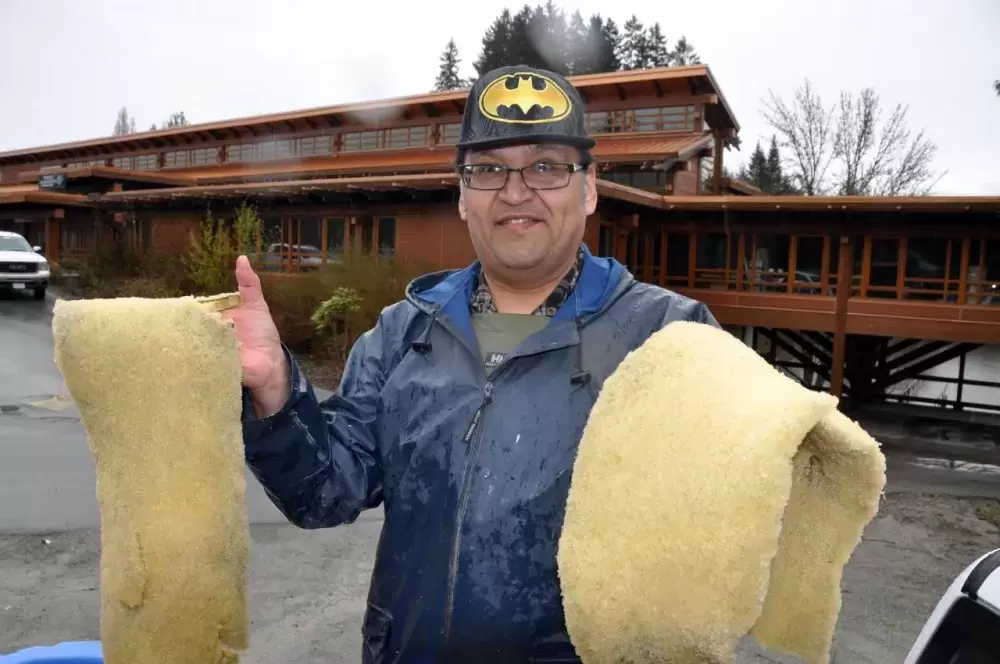Tseshaht First Nation members turned out for the much-anticipated annual herring roe distribution on Wednesday (April 12) afternoon. While the official starting time was 4:30 p.m., elected councillor Hugh Braker said this is one event where people can be expected to show up early.
“I was here at 3:30 and there were already 40 people in line. Hundreds of people have gone through,” he said. “You can tell this goes to the heart of being Tseshaht.”
In past years, Tseshaht members would set out boughs in Barkley Sound for the herring to spawn on, so the herring roe was produced internally, Braker said.
“It’s kind of sad that we have to buy this from Port Hardy, but as you know, DFO mismanaged the herring fishery in the [19]60s and 70s. As a result, they fished out the herring in Barkley Sound, and it’s only just barely starting to come back in our traditional territory.”
Braker said abundant harvests were typical prior to the commercial herring roe fishery geared to the Japanese market. This year, Tseshaht purchased about 1,600 pounds of roe. The product is bonded to a processed layer of kelp.
“When I was a kid, we used to get triple-quadruple this on branches, and now we have to buy it. It’s kind of sad.”
Tseshaht fisheries manager Andy Olsen said it has been more than 15 years since Tseshaht has had a significant harvest of herring roe.
“We’ve done some experimenting with roe-on-bough the last few years, but it’s been very thin,” he said.
Olsen noted that in the traditional herring roe harvest, the fish simply deposit the eggs on a surface such as kelp or tree boughs, and then swim off to spawn another day.
By contrast, the commercial herring roe fishery scoops up the whole fish, and then the roe is extruded manually or by machine.
“The fish are ground up into fish meal for pet food or fertilizer or whatever,” he said.
Another major problem is that in these big mixed-stock fisheries, the harvesters are indiscriminately scooping up fish from small, threatened spawning areas, he explained.
“Those fish might have been going to Vernon Bay, or Toquart [Bay] or the Broken Group,” Olsen said. “Now we have very limited spawning areas – along Salmon Beach, Toquart Bay – but those are the only places that have any consistent spawning return.”
Families lined up bearing an assortment of tubs, trays and containers. Up on the truck deck, Boyd Fred and Valentine Gomez measured out rough portions of the prized roe, Fred using a two-litre pitcher. Gomez agreed that it was regrettable that Tseshaht now has to purchase or barter for herring roe to provide for its members.
“Back in the day it was like this, before DFO overfished the herring,” he said. “They used to get nice thick stuff just off Nettle Island in the Broken Group.”
“Spawn-on-kelp?” Ha-Shilth-sa asked.
“Spawn on anything,” Fred observed.
In that vein, Gomez proposed an intriguing culinary experiment.
“I’d like to try spawn-on-rosemary. Just to give it that little twist.”







